Ensuring Safety and Health! First Aid Training Conducted
At our company, we are committed to providing a safe and secure work environment for all employees. As part of this effort, we invited external experts today to conduct a first aid training session for emergency situations.
While we take every precaution to prevent accidents and disasters, it is equally important to be able to respond quickly and appropriately in case of an emergency. In this training, employees learned CPR (Cardiopulmonary Resuscitation) and how to use an AED (Automated External Defibrillator) through both classroom instruction and hands-on practice.
All participants were highly engaged, actively learning and sometimes even enjoying the session. This training served as a valuable opportunity to raise awareness and develop practical skills, with employees expressing a strong desire to "be able to protect loved ones in case of an emergency."
We regularly conduct such training programs to ensure that each employee is equipped not only to protect themselves but also their colleagues, families, and others around them. Moving forward, we will continue striving to maintain a safe and healthy workplace for everyone.
🚑 Are you prepared for an emergency at your workplace or home?
Regular training like this can help create a safer environment. Let’s work to build a workplace where safety comes first!
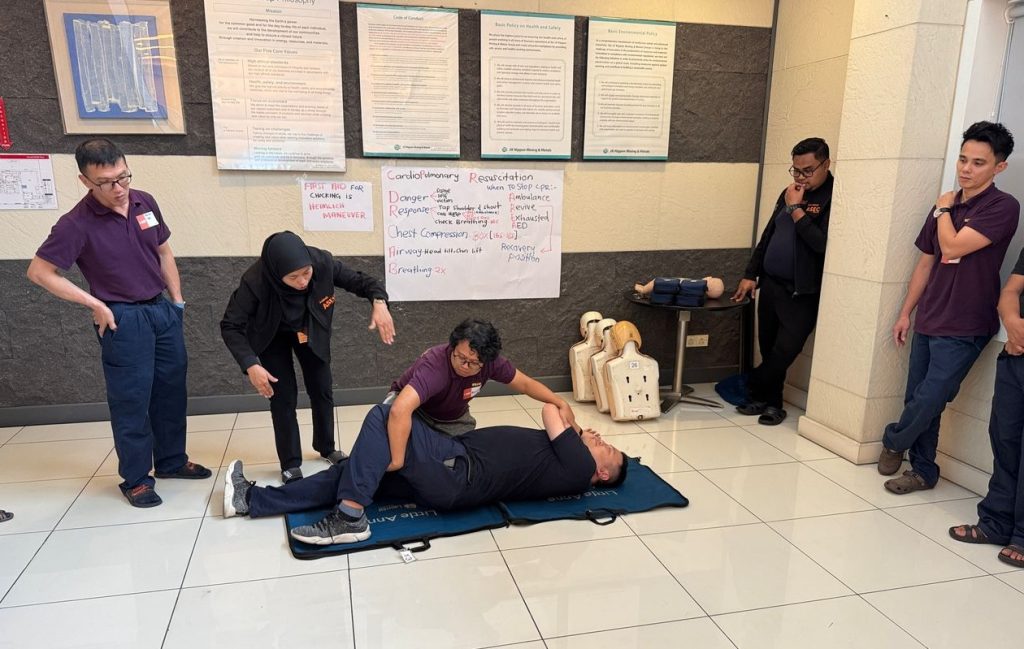
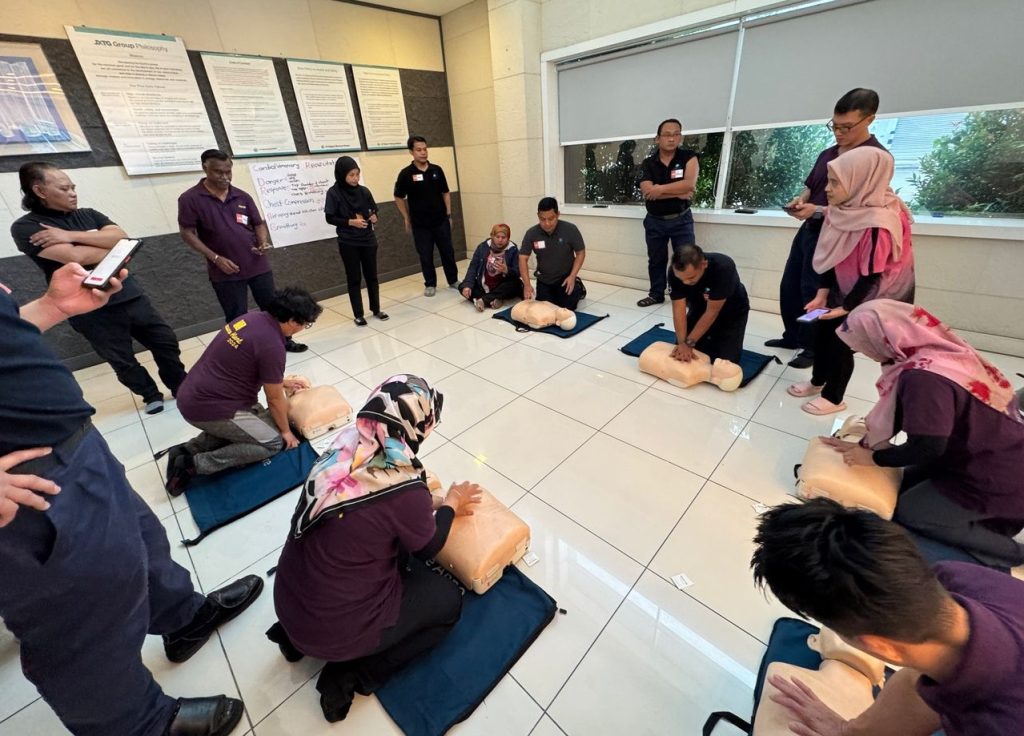
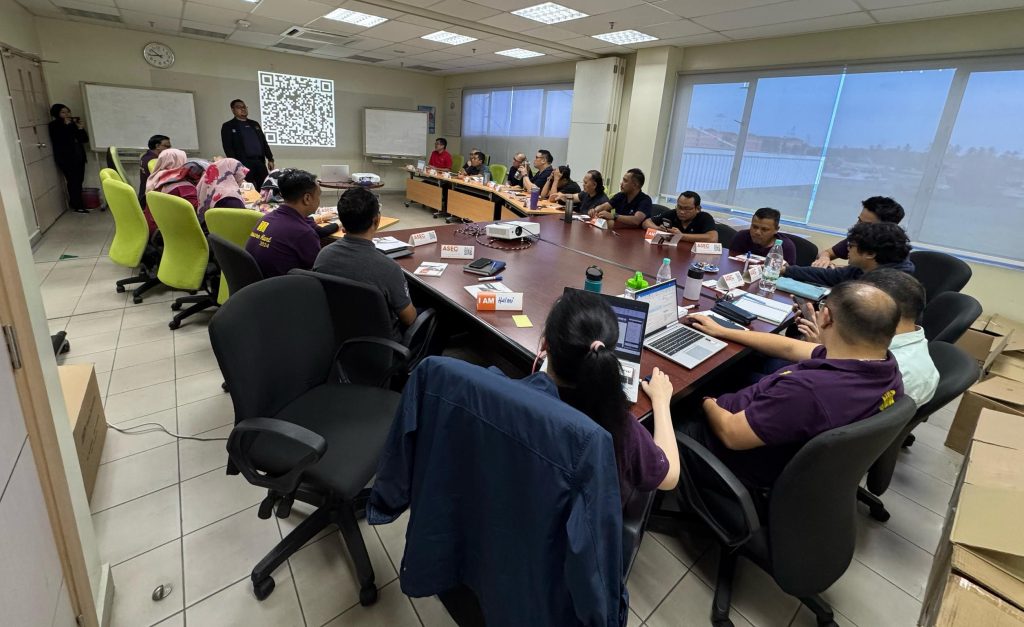
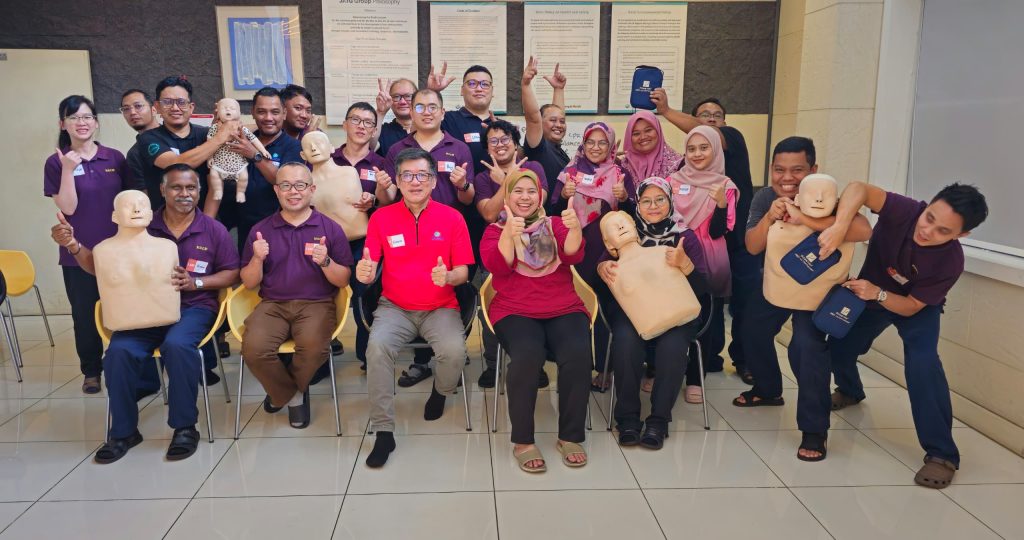
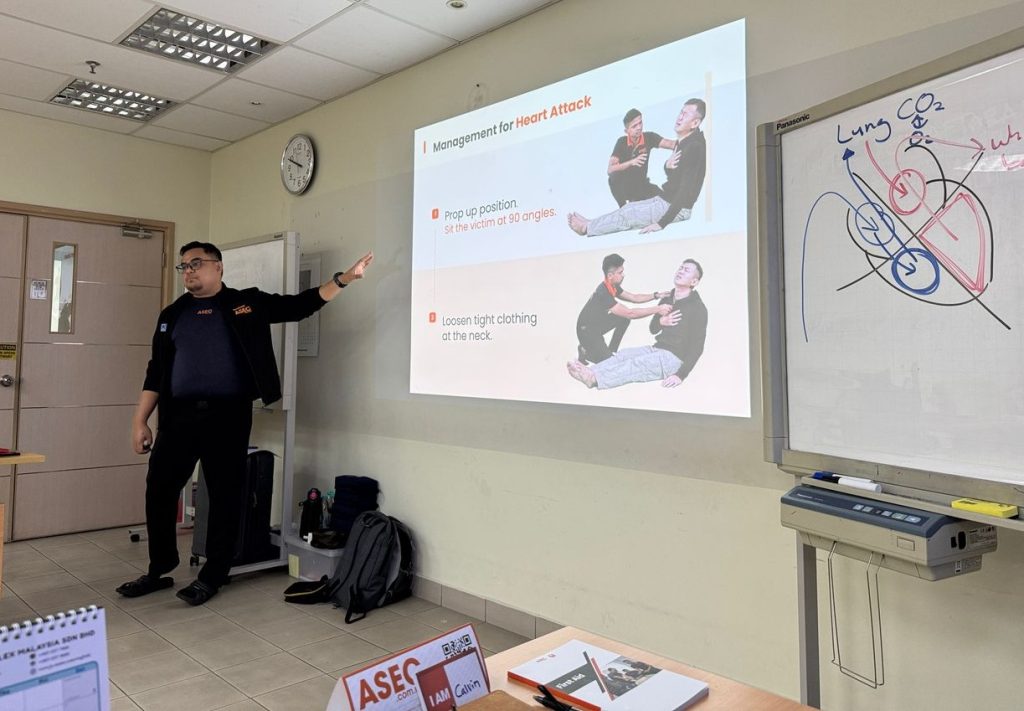
What is First Aid Taininng ?
First Aid Training is the process of learning basic medical techniques to help people in emergency situations before professional medical assistance arrives. It covers essential skills such as:
- CPR (Cardiopulmonary Resuscitation) – Restoring breathing and circulation for someone in cardiac arrest.
- AED (Automated External Defibrillator) Use – Operating a device that can help restart the heart.
- Wound Care – Treating cuts, burns, and bleeding to prevent infection and further injury.
- Choking Response – Helping someone who is choking and unable to breathe.
First aid training can be life-saving in workplaces, homes, and public places. Many companies, schools, and organizations conduct first aid training to ensure people can respond effectively in emergencies.
What is CPR ?
CPR (Cardiopulmonary Resuscitation) is a life-saving technique taught in first aid training that helps maintain blood flow and oxygen supply to the brain when a person's heart has stopped beating or they have stopped breathing.
When is CPR needed?
CPR is performed when someone:
- Is unresponsive and not breathing.
- Has suffered cardiac arrest (heart suddenly stops beating).
- Has drowned, choked, or experienced a severe injury leading to stopped breathing.
How is CPR performed?
CPR consists of two main steps:
- Chest Compressions:
- Place both hands in the center of the chest.
- Push hard and fast (about 100–120 compressions per minute).
- Compress at least 5 cm (2 inches) deep for adults.
- Rescue Breaths (if trained to do so):
- Tilt the head back, lift the chin, and pinch the nose.
- Give two slow breaths, watching the chest rise.
If an AED (Automated External Defibrillator) is available, it should be used as soon as possible to deliver a shock to restart the heart.
CPR buys time until professional medical help arrives, increasing the chances of survival. That’s why learning CPR in first aid training is essential for workplaces, homes, and public safety. 🚑
What is AED ?
AED (Automated External Defibrillator) is a portable medical device used in First Aid to help someone experiencing sudden cardiac arrest. It delivers an electric shock to the heart to restore a normal rhythm.
How Does an AED Work?
- Turn on the AED – Follow the voice or visual instructions.
- Attach the Pads – Place the electrode pads on the person’s bare chest.
- Analyze the Heart Rhythm – The AED automatically detects if a shock is needed.
- Deliver the Shock (if advised) – Press the button to send an electric shock to restart the heart.
When Should You Use an AED?
- If a person collapses, is unresponsive, and not breathing normally, use an AED immediately.
- AEDs are commonly found in workplaces, schools, airports, shopping malls, and public buildings.
Why is an AED Important?
- Fast action saves lives – Every minute without CPR and defibrillation reduces survival chances by 7-10%.
- Easy to use – The device gives clear step-by-step instructions.
- Works with CPR – AED use combined with CPR (Cardiopulmonary Resuscitation) greatly improves survival rates.
Learning how to use an AED in first aid training can help save lives in emergencies! 🚑⚡


